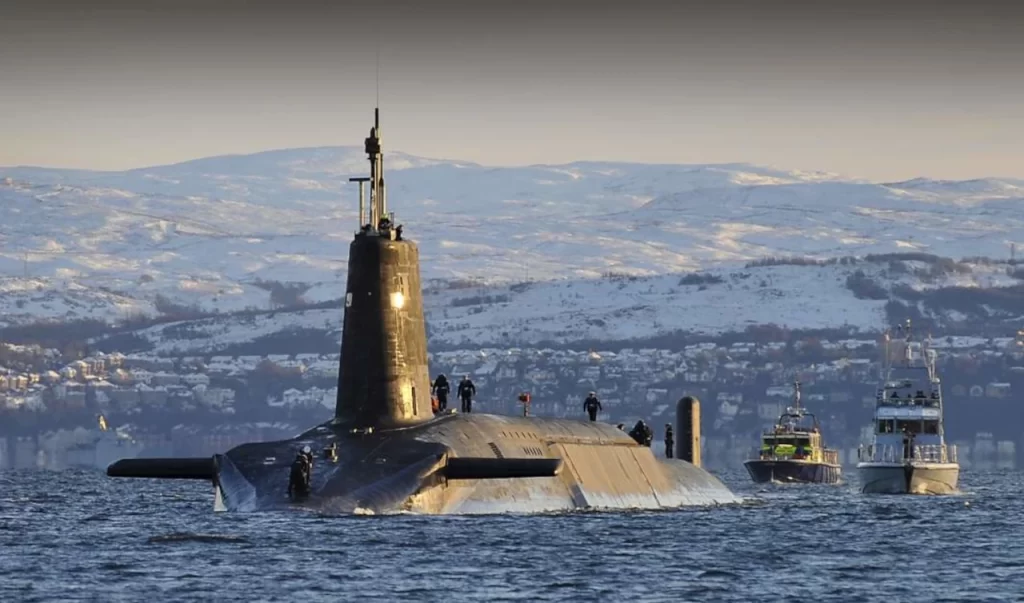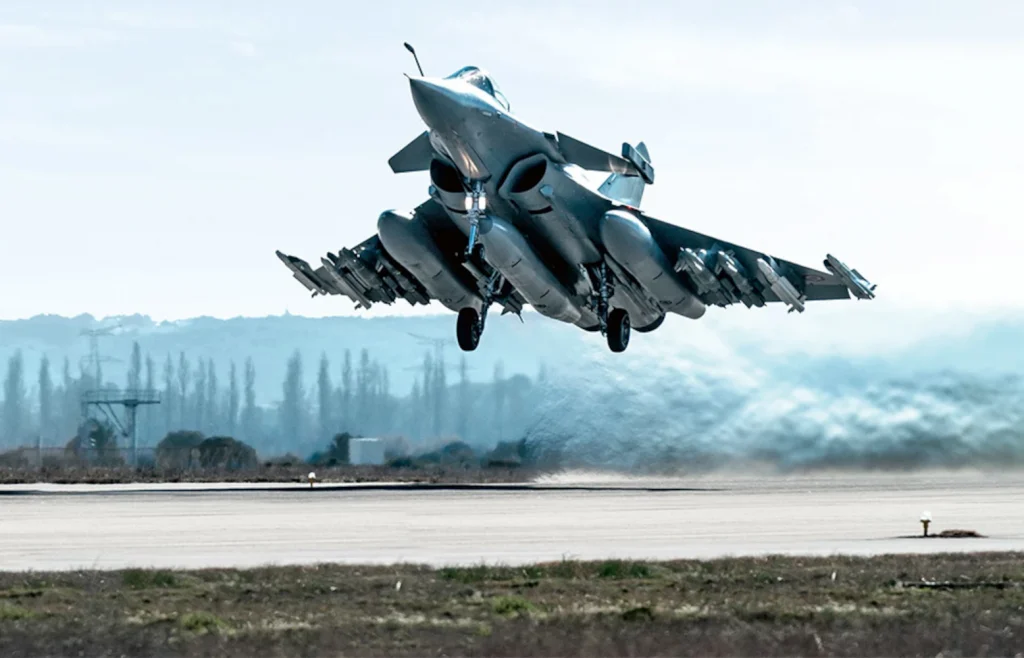France and the United Kingdom rank as the third and fourth largest nuclear powers globally, following Russia and the United States.
France and the United Kingdom maintain autonomous nuclear forces but occasionally collaborate on nuclear issues. These are the sole European countries with autonomous nuclear deterrence capabilities.
British Arsenal
When the Cold War ended in the 1990s, Britain cut its stockpile in half, from 540 warheads to about 225. As of 1998, all nuclear weapons have been carried only by four Vanguard-class submarines on Trident II missiles. Most of the arsenal is stored, with only 120 warheads available for missile deployment. Only 40 of these weapons are actively deployed aboard one of the four submarines.
Each Vanguard-class submarine carries 16 three-stage Trident II missiles with a maximum range of 12,000 km. These are American missiles. They were commissioned in Britain in 1995 and contain thermonuclear warheads created and built domestically, but their characteristics are extremely close to those of the American missile’s native warheads.
The British warheads are believed to employ the American W-76 warhead casing; however, the thermonuclear charge has three power levels: 0.3 kt, up to 10 kt, and 100 kt. Each missile can carry one to eight warheads with individual targeting, which means that each warhead stage of the missile can direct each warhead down a slightly different trajectory than the previous one.

Britain did not rush to modernise its nuclear arsenals. Upgrades were scheduled to commence after 2030. However, given the current difficult scenario, London has halted the nuclear arsenal reduction programme and announced an increase in the number of warheads to 260. Second, conversations began about the necessity to modernise missiles and warheads now rather than in the 2030s.
Increasing the overall number of warheads will double or triple the number available for deployment. The English fleet could launch 120 warheads in a single salvo from active duty or 360 if more submarines were deployed.
Franch Arsenal
Unlike Britain, France stuck to its traditions and kept nuclear weapons in two forms: warheads for ballistic missiles on submarines and “air-to-ground” missiles for tactical aircraft. The total arsenal is slightly larger than Britain’s, with approximately 300 warheads. Almost all French warheads are ready for quick deployment and operation.
ASMPA “air-to-ground” missiles can carry 54 warheads and range up to 300 km. They were upgraded in the 2000s and are capable of 300 kt. These missiles must be fired from a carrier aircraft, some examples of which are the multirole fighter Rafale used by the French Air Force. It has a combat radius of 1300 kilometres. However, it is equipped with in-flight refuelling and can technically target ASMPA missiles anywhere in Europe.

The second component of France’s nuclear arsenal is submarine-launched ballistic missiles. Following the end of the Cold War, six French Redoutable-class ballistic missile submarines were replaced by four modern Triomphant-class submarines. Each ship carries 16 M51 ballistic missiles with a maximum range of 9,000 km and up to six warheads. France’s naval nuclear forces are undergoing modernisation; currently, some missiles are armed with TN-75 warheads developed in the 1990s with a power of 100 kt, while others carry the most contemporary TNO warheads (Tête nucléaire océanique – English: Oceanic nuclear warhead).
France maintains a maximum of two ballistic missile submarines on active duty at any given time, each carrying 96 warheads. Thus, the total number of warheads in European nuclear forces now is slightly over 500, much lower than the nuclear arsenals of the United States and Russia. However, the locations where France and Britain’s naval nuclear forces are stationed, the North Atlantic and the North Sea, cover practically all of Russia, the main rival.
Europe’s Nuclear Pillars
The United Kingdom has a policy of not providing exact figures for its operational nuclear weapons stockpile. France officially publishes the amount of nuclear warheads.
France and the United Kingdom rely on nuclear deterrence as a significant component of their national security plans, albeit their nuclear doctrines differ in some ways. The UK has a minimum credible deterrent strategy, whereas France adheres to the concept of strict sufficiency,’ which is the lowest amount possible in light of the strategic situation.
In the case of a major global crisis, France and the UK would almost certainly coordinate nuclear activities with NATO allies, particularly the United States, as outlined in classified protocols. Despite having smaller arsenals than during the Cold War, these two European states’ modernised nuclear forces remain extremely powerful and credible. Their unwavering commitment to nuclear deterrence assures that potential rivals cannot dismiss or overlook the formidable danger posed by British and French nukes. As crucial NATO members, France and the United Kingdom’s nuclear capabilities significantly improve the Alliance’s deterrence and defence.
